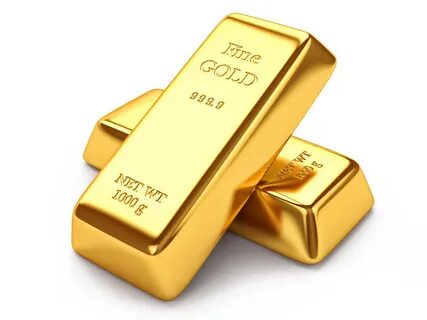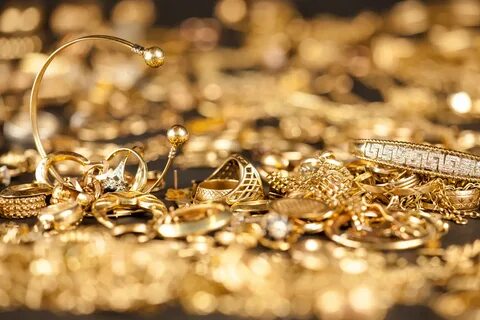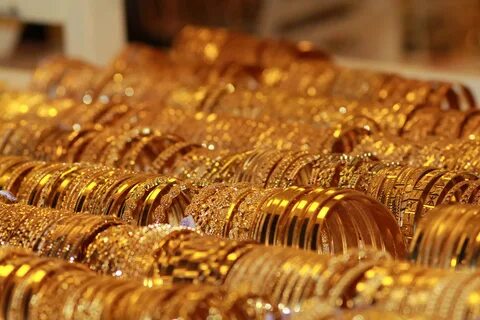Precious metals have long been revered for their beauty and scarcity, making them a popular choice for investors looking to diversify their portfolios. In recent years, the investment potential of precious metals has garnered increasing attention as economic uncertainties have prompted investors to seek out safe-haven assets. In this article, we will explore the investment potential of precious metals, examining their historical performance, current market trends, and factors influencing their future outlook. Whether you are a seasoned investor or new to the world of precious metals, this article will provide valuable insights into the opportunities and risks associated with investing in these unique assets.
Exploring the investment potential of precious metals involves researching and understanding the various factors that can affect their value, such as supply and demand dynamics, geopolitical tensions, currency fluctuations, and inflation. It also requires analyzing historical price movements and considering the long-term outlook for the global economy. Investors can explore different ways to invest in precious metals, such as through physical bullion, ETFs, mining stocks, and futures contracts. Diversifying a portfolio with an allocation to precious metals can provide a hedge against market volatility and currency depreciation while potentially offering attractive returns over time. However, it’s important for investors to carefully consider their risk tolerance and investment goals before allocating resources to precious metals.
The Role of Precious Metals in Shaping Global Economies

As global demand for precious metals continues to rise, their significance in the world economy cannot be overstated. From gold and silver to platinum and palladium, these metals play a crucial role not only in the jewelry industry but also in investment portfolios and technological advancements. With increasing attention on environmental sustainability and ethical sourcing, the mining and extraction of these precious metals are facing greater scrutiny. However, as the world becomes more unpredictable, the allure of precious metals as a safe haven investment continues to grow.
Precious metals have always played a crucial role in shaping global economies. Gold, silver, platinum, and palladium have been used as store of value, currency, and means of exchange for centuries. These metals have been sought after for their intrinsic value and limited supply, making them a reliable asset in times of economic uncertainty.
In addition to their role as a form of currency, precious metals also play a significant role in driving economic activity. The mining and extraction of these metals supports numerous jobs and contributes to the overall GDP of many countries. Furthermore, the demand for precious metals in various industries, such as electronics, jewelry, and manufacturing, further underscores their importance in shaping global economies.
Moreover, precious metals often serve as a safe haven investment during times of economic instability or inflation. Investors and governments alike turn to these metals as a hedge against currency devaluation and market volatility. The price movements of precious metals are closely monitored by economists and analysts as indicators of overall economic health and market sentiment.
Overall, the role of precious metals in shaping global economies is multifaceted and has significant implications for monetary policy, international trade, and financial markets. Their enduring value and versatility make them a cornerstone of the modern economic landscape.
Investing in Precious Metals: A Beginner’s Guide

Investing in Precious Metals: A Beginner’s Guide is a comprehensive resource for those interested in entering the world of precious metals investment. The book covers all aspects of investing in precious metals, including the different types of metals available for investment, their unique properties, and how to buy and store them. It also delves into the historical performance of precious metals as an investment, common mistakes to avoid, and the potential risks and rewards of investing in this asset class. This guide is suitable for anyone new to precious metals investing and is looking to build a solid foundation of knowledge in this area.
The Environmental Impact of Mining Precious Metals

Mining precious metals has a significant environmental impact due to the extensive excavation and processing required to extract the metals from the earth. This process often involves the use of heavy machinery, explosives, and chemicals, which can result in deforestation, soil erosion, and contamination of groundwater and surface water.
Additionally, the disposal of waste materials from mining operations, such as mine tailings and wastewater, can lead to long-term environmental degradation. These waste products often contain toxic substances including heavy metals and cyanide, which can leach into the surrounding environment and harm ecosystems and human health.
Furthermore, the energy consumption associated with mining and processing precious metals contributes to greenhouse gas emissions and climate change. The extraction and production of metals such as gold and silver can also result in habitat destruction and displacement of indigenous communities.
Overall, the environmental impact of mining precious metals underscores the need for sustainable and responsible mining practices to minimize harm to the natural world. This can include reclamation of mining sites, implementation of pollution control measures, and utilization of cleaner technologies in the extraction and processing of precious metals.
The Historical Significance of Precious Metals in Jewelry
See also: the price for gold

Precious metals have held a significant role in jewelry-making throughout history. Gold, silver, and platinum have been valued for their rarity, beauty, and durability for thousands of years. In ancient civilizations, such as in Egypt and Mesopotamia, precious metals were reserved for the elite and were often used to create religious and ceremonial objects. In medieval Europe, precious metals were used to create intricate pieces of jewelry that served as symbols of wealth and status. During the Renaissance, advancements in jewelry-making techniques allowed for more elaborate designs to be created using precious metals. Today, precious metals continue to be highly valued in the jewelry industry for their timeless beauty and investment value.
The Future of Precious Metals: Trends and Forecasts
The future of precious metals is influenced by a range of factors, including economic and geopolitical events, supply and demand dynamics, and changing consumer behavior. Key trends include the increasing use of precious metals in technology and sustainability efforts, as well as growing investment demand. Forecasts predict continued volatility in prices, particularly for gold and silver, as global market conditions evolve. Additionally, advancements in mining technology and exploration techniques are expected to impact future production levels and push the industry toward more sustainable practices. Overall, the future of precious metals is complex and multifaceted, with both challenges and opportunities on the horizon.
Ethical Sourcing of Precious Metals in the Jewelry Industry
Ethical sourcing of precious metals in the jewelry industry refers to ensuring that the metals used in jewelry production have been responsibly and sustainably mined, with fair labor practices and minimal environmental impact. This includes avoiding metals that have been mined or processed using child labor, forced labor, or environmentally damaging practices. Ethical sourcing efforts also seek to support local mining communities and ensure that miners receive fair wages and safe working conditions. Many jewelry companies now offer products that are certified as ethically sourced, providing consumers with peace of mind when making a purchase. Overall, ethical sourcing of precious metals is an important consideration for the modern jewelry industry, as it helps to ensure that the beautiful pieces we wear come with a clear conscience.
The Technology Behind Extracting Precious Metals from Ores
The technology behind extracting precious metals from ores involves several different processes, including crushing, grinding, and chemical extraction.
One common method is known as heap leaching, where the ore is crushed into small pieces and placed in a heap on an impermeable pad. A dilute cyanide solution is then sprayed over the heap, dissolving the precious metals into the solution. The solution is collected and the metals are later extracted through a process such as carbon adsorption or electrowinning.
Another method is known as flotation, where the crushed ore is mixed with water and chemicals to create a slurry. Air is then bubbled through the slurry, causing the desired minerals to attach to the air bubbles and rise to the surface, where they can be collected.
Smelting is another important process, involving the heating of the ore to high temperatures in a furnace. This process separates the precious metals from the other components of the ore, such as sulfur and other impurities.
Overall, the technology behind extracting precious metals from ores involves a combination of mechanical, chemical, and thermal processes to separate the valuable metals from the surrounding rock and other materials.
The Importance of Diversifying with Precious Metals in a Portfolio
Diversifying with precious metals in a portfolio is important for several reasons. Firstly, precious metals like gold and silver have historically maintained their value over time, serving as a hedge against inflation and currency devaluation. This can help minimize overall portfolio risk and provide a safe haven during times of economic instability.
Additionally, precious metals often move independently of other asset classes such as stocks and bonds, making them a valuable diversification tool. When traditional investments experience volatility, the value of precious metals may remain more stable, offering protection to the overall portfolio.
Furthermore, the global demand for precious metals continues to drive their value, making them a potentially lucrative long-term investment. With a limited supply and increasing industrial and jewelry demand, precious metals can serve as a valuable store of wealth.
Overall, including precious metals in a portfolio can provide diversification benefits, help mitigate risk, and potentially enhance overall returns.
The Cultural Meanings of Precious Metals in Different Societies
Precious metals such as gold, silver, and platinum hold significant cultural meanings in different societies around the world. In many cultures, gold is associated with wealth, power, and prestige, and is often used in traditional jewelry and ceremonial objects. Silver is also valued for its beauty and durability, and is often used in decorative and symbolic items. Platinum, with its rarity and strength, is often associated with luxury and exclusivity.
In some societies, these precious metals are also imbued with spiritual and symbolic meanings. Gold, for example, is often associated with the sun and with divinity in many cultures, while silver is linked to the moon and feminine energy. These cultural meanings and associations contribute to the significance of precious metals in traditional rituals, ceremonies, and celebrations.
The Resurgence of Interest in Precious Metals as a Safe Haven
The resurgence of interest in precious metals as a safe haven can be attributed to several factors. Economic uncertainties, geopolitical tensions, and currency devaluation have all contributed to a growing desire for a reliable store of value. Gold, silver, and other precious metals are seen as a hedge against inflation and market volatility, making them an attractive investment option for many individuals and institutions. Additionally, the increasing popularity of digital currencies has raised concerns about the stability of traditional fiat currencies, leading more investors to seek out the security of precious metals. As a result, the demand for gold and silver has risen, driving up prices and renewing interest in these timeless assets.
In conclusion, exploring the investment potential of precious metals can be a lucrative and stable option for investors looking to diversify their portfolios. With their intrinsic value and history of serving as a store of wealth, precious metals like gold, silver, and platinum continue to attract investors seeking to protect their assets against market volatility. Whether it’s through physical ownership or investment in mining companies, precious metals offer a unique opportunity for long-term growth and security in an ever-changing financial landscape. Therefore, it is worth considering precious metals as a viable investment option for those looking to secure their financial future.
See also
https://www.veracash.com/fr/cours-or
https://www.bdor.fr/cours-or
https://www.gold.fr/